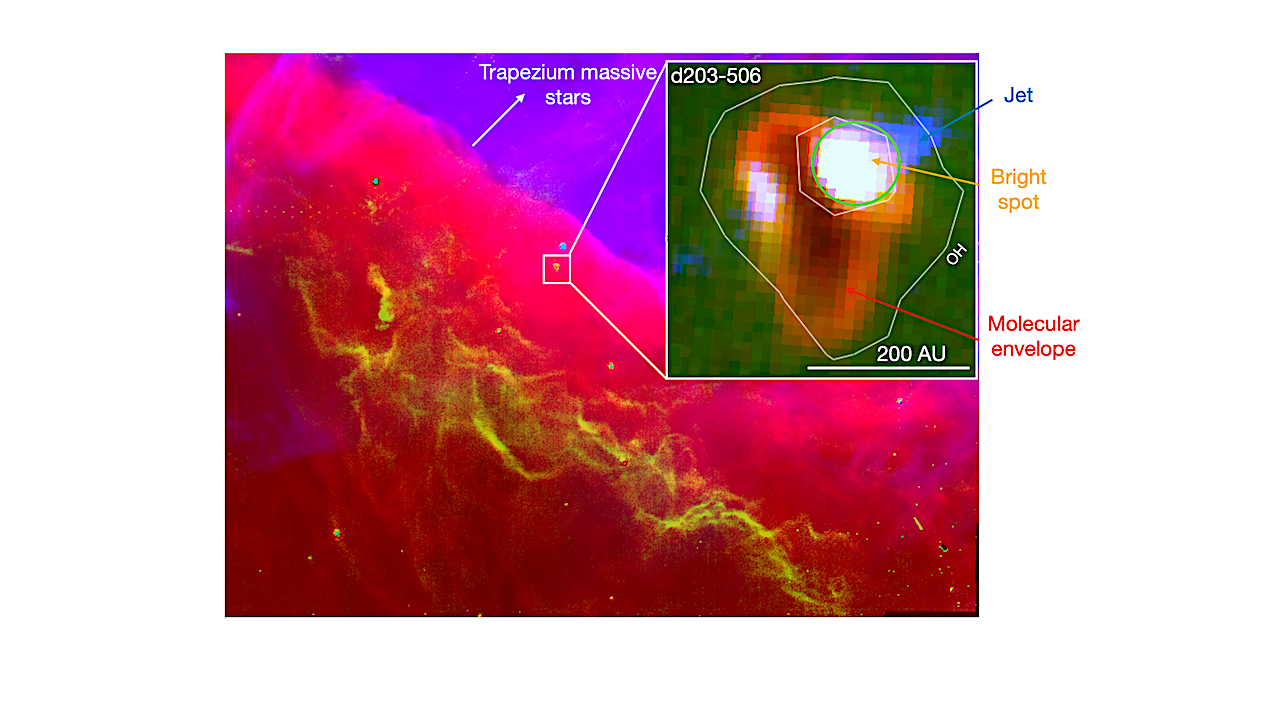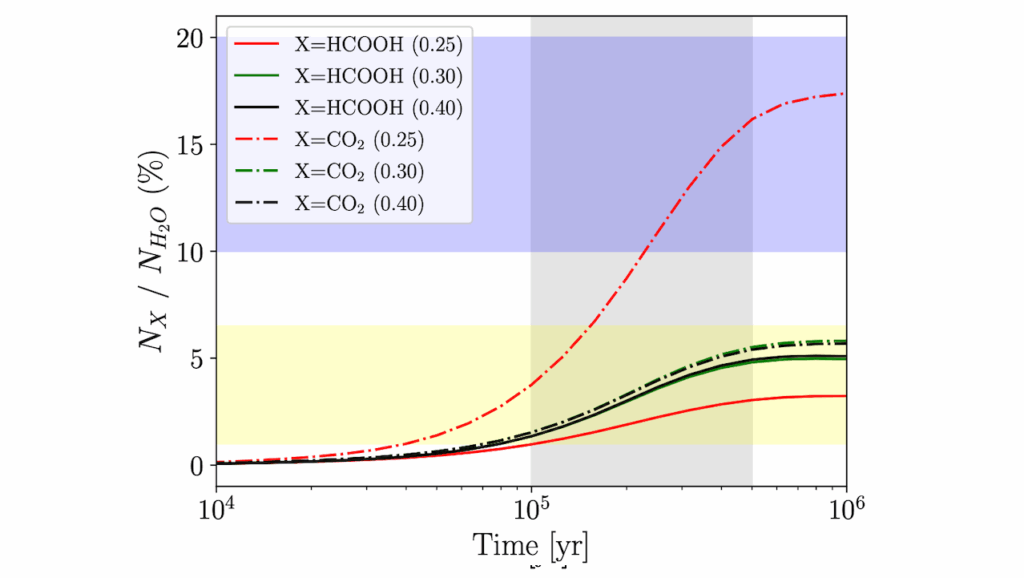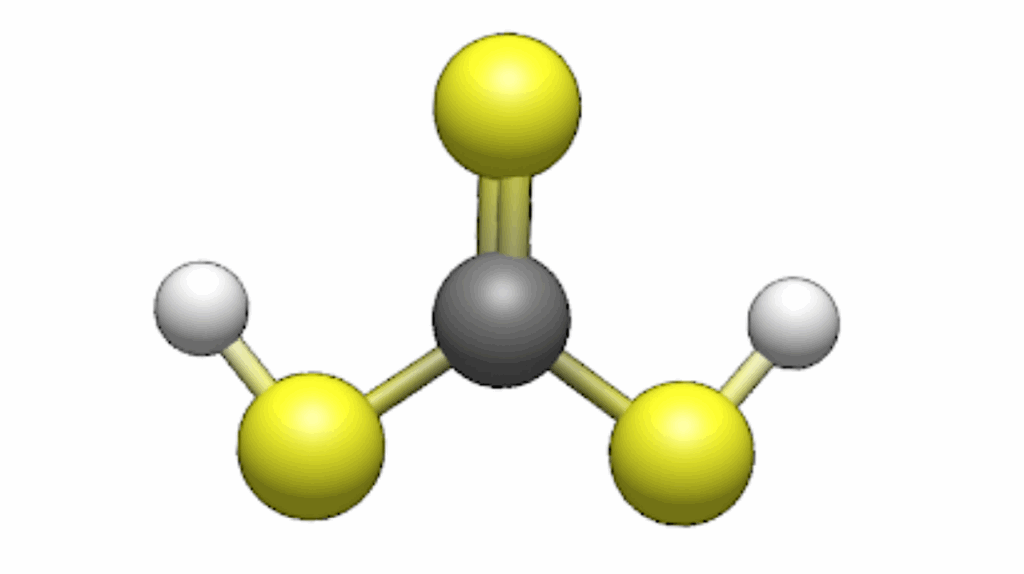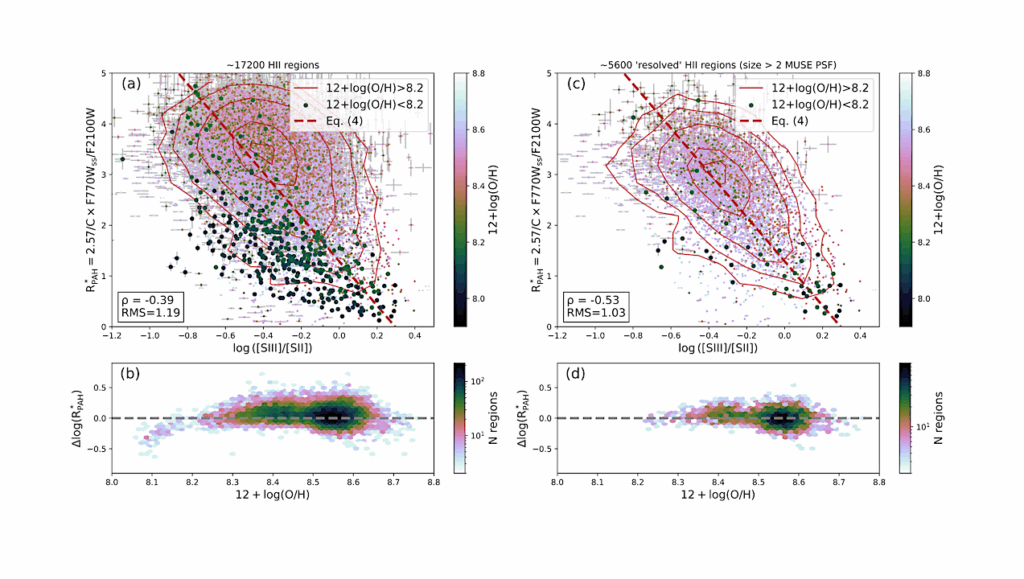OH As A Probe Of The Warm Water Cycle In Planet-forming Disks

Water is a key ingredient for the emergence of life as we know it. Yet, its destruction and reformation in space remains unprobed in warm gas.
Here, we detect the hydroxyl radical (OH) emission from a planet-forming disk exposed to external far-ultraviolet (FUV) radiation with the James Webb Space Telescope. The observations are confronted with the results of quantum dynamical calculations.
The highly excited OH infrared rotational lines are the tell-tale signs of H2O destruction by FUV. The OH infrared ro-vibrational lines are attributed to chemical excitation via the key reaction O+H=OH+H which seeds the formation of water in the gas-phase. We infer that the equivalent of the Earth ocean’s worth of water is destroyed per month and replenished.
These results show that under warm and irradiated conditions water is destroyed and efficiently reformed via gas-phase reactions. This process, assisted by diffusive transport, could reduce the HDO/H2O ratio in the warm regions of planet-forming disks.
Marion Zannese, Benoît Tabone, Emilie Habart, Javier R. Goicoechea, Alexandre Zanchet, Ewine F. van Dishoeck, Marc C. van Hemert, John H. Black, Alexander G. G. M. Tielens, A. Veselinova, P. G. Jambrina, M. Menendez, E. Verdasco, F. J. Aoiz, L. Gonzalez-Sanchez, Boris Trahin, Emmanuel Dartois, Olivier Berné, Els Peeters, Jinhua He, Ameek Sidhu, Ryan Chown, Ilane Schroetter, Dries Van De Putte, Amélie Canin, Felipe Alarcón, Alain Abergel, Edwin A. Bergin, Jeronimo Bernard-Salas, Christiaan Boersma, Emeric Bron, Jan Cami, Daniel Dicken, Meriem Elyajouri, Asunción Fuente, Karl D. Gordon, Lina Issa, Christine Joblin, Olga Kannavou, Baria Khan, Ozan Lacinbala, David Languignon, Romane Le Gal, Alexandros Maragkoudakis, Raphael Meshaka, Yoko Okada, Takashi Onaka, Sofia Pasquini, Marc W. Pound, Massimo Robberto, Markus Röllig, Bethany Schefter, Thiébaut Schirmer, Sílvia Vicente, Mark G. Wolfire
Comments: Version submitted to Nature Astronomy
Subjects: Earth and Planetary Astrophysics (astro-ph.EP); Astrophysics of Galaxies (astro-ph.GA); Solar and Stellar Astrophysics (astro-ph.SR)
Cite as: arXiv:2312.14056 [astro-ph.EP] (or arXiv:2312.14056v1 [astro-ph.EP] for this version)
Submission history
From: Marion Zannese
[v1] Thu, 21 Dec 2023 17:32:23 UTC (37,043 KB)
https://arxiv.org/abs/2312.14056
Astrobiology, Astrochemistry








